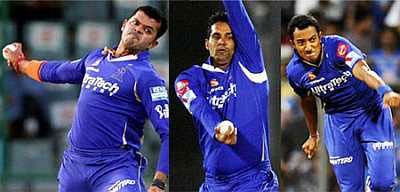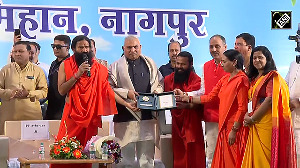If the spot-fixing scandal in cricket and the revelations around it prove anything, it is that the time has come to legalise betting in India, feels Ayaz Memon.
As the latest spot-fixing scandal suggests, the move isn’t licentious but practical
If the spot-fixing scandal in cricket and the revelations around it prove anything, it is that the time has come to legalise betting in India. The conservatives will insist that such a licentious move does not gel with the culture of the country, but this argument is as flawed as the one for prohibition of liquor, which hardly stops people from drinking.
Consider some figures that have emerged in the recent controversy. Betting on cricket alone in India is said to be to the tune of Rs 40,000 crore. Overall, the illegal betting industry (including other sports, political results and so on) would raise this figure another 25 to 30 per cent. Even if these figures are a trifle exaggerated, it is still a whopping amount that must interest sociologists, policy makers and tax authorities.

Going past the sensational aspects of the cricket story in which players, team owners and film stars are allegedly involved (though the police case seems to be crumbling in both Mumbai and Delhi), what comes through most tellingly is that Indians are a betting people. Any “cultural” defence to counter this conclusion is a fig leaf — apart from costing the tax authorities thousands of crores of rupees in revenue.
Let’s not kid ourselves that betting is done by people in the underworld among themselves. That is silly in the extreme even if it panders to populist theories and imaginations in which “villains” are readily found, but facts are obfuscated. If anything, the underworld would only be interested if it can make money from the absence of a, or malfunctioning, system.
The very fact that betting is underground means that it is run by what the police romantically call “unsavoury elements”. Clearly, an illegal activity has to be run by people who play footsie with criminality in the strictly legal sense, even if they are not necessarily the mob or the underworld.
At the least, legalising betting will bring some clarity and competitive cleansing to the act and the control of gambling. And if the taxation on earnings from gambling are rationalised – say, 10 per cent deducted at source as is the case in all other areas – bettors would be more predisposed towards taking the legal rather than the illegal route.
Coming to the specific case of cricket -- and by extension any other sport -- this will also allow both the police and sports authorities to monitor proceedings better. Right now, both seem to be shooting up a dark alley, hoping that some bullet will find its target. That is leaving too much to chance or good fortune.
For instance, in the current scam, the Delhi police claim they stumbled on conversations between some players from Rajasthan Royals and bookies while tapping calls on a terror trail. In circa 2000, too, when cricket’s first major match-fixing scam broke, the Delhi police had got on to Hansie Cronje fortuitously while investigating some other case.
Mind you, corruption in sport is not peculiar to India. Moreover, almost every sport has had to deal with this – especially when there is a rush of big money into the system -- so cricket is no exception. But cricket has been curiously lax in taking decisive steps towards limiting the damage, in spite of the threats posed to its credibility and fan interest.
The Board of Control for Cricket In India could be said to have been the most lax here. Whatever was done after the scandal of 2000 was definitely not enough. And even if the board is stymied by illegal betting, it has created no internal monitoring system to track suspicious activities and people -- especially after the cash-rich Indian Premier League came into existence – or indeed set up coordination committees with other boards to fight this menace at a global level.
Unfortunately, in countries where betting is legal, too, cricket authorities have not been stringent enough, despite the revelations of 2000, and more particularly of 2010 when three Pakistani players were busted for spot-fixing in a test match in a sting operation by a newspaper. True, the International Cricket Council has its anti-corruption special unit in place, but so far it has proved to be more decorous and fangless than a deterrent. But this is also because spot-fixing is extremely difficult to crack.
Unlike match-fixing, where at least five or six players have to be involved in determining the outcome of a game, spot-fixing (as also spread and session betting) does not care about the result, but about specific events during passage of play. Moreover, this can be accomplished on a one-on-one basis between a player and bookie, so nobody need be the wiser.
So what can be done? There are models available to monitor betting and player involvement and cricket can pick up from them. For instance, FIFA, football’s global governing body, has an early warning system to track betting sites. Tennis also keeps tabs on betting. The logic of such surveillance is that calculations of “chance” offered by official or unofficial bookies can’t be very different, and any unusual odds will alert authorities to potential mischief.
Take the spot-fixing charges alleged against Ajit Chandila, Ankit Chavan and S Sreesanth for instance. If betting were legal and an extraordinarily high volume of money was punted on their giving away 13 or 14 runs in an over, it would immediately make the authorities sit up and take notice. The bets could be cancelled and, in extreme cases, perhaps even a match.
No system is perfect, but any system is better than not having a system. Players also have to get involved in keeping their sport clean. They are not just flag bearers or performing monkeys, but also custodians of the sport. And they are best suited to mentor young hopefuls in best practices.
The author is a sports journalist














 © 2025
© 2025